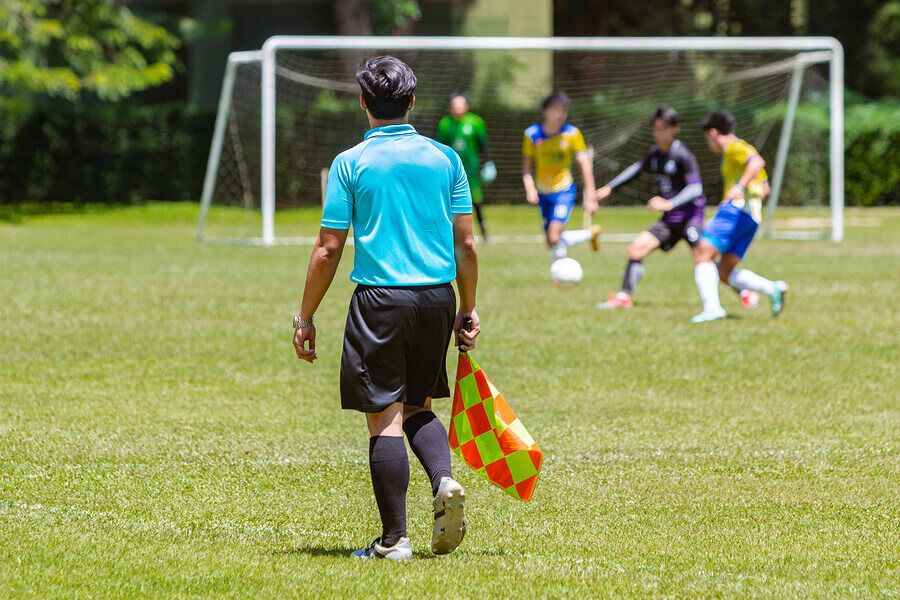The New Sports Law in Spain: Everything You Need to Know

The preliminary draft of the Sports Law in Spain was approved in 2019 by the Council of Ministers. This new draft replaces the one promulgated in 1990. In today’s article, we’ll go over the main modifications and changes proposed in the law and how they benefit athletes.
The approval of the new sports law in Spain
Because the sports law in Spain is classified as an Organic law, it needs to be approved by Congress. After all political parties have reached a consensus, the new law will go to Congress for approval and processing.
Once it reaches Congress, the law needs to reach a positive vote of at least two thirds. As with all legal issues in Spain, this is a lengthy process that might require a few more months.
The basics of the new sports law in Spain
The new sports law in Spain brings about a few changes in comparison with the previous legislation.
For starters, it highlights the intention to articulate (in better terms) the relations between the central, regional and local administrations. It’s also intended to correct situations of injustice and inequality in the sports world, as well as to promote control and administrative transparency.
Here are the main areas the new law will cover:
The athletes
The main change refers to women’s sport. In the Sports Act of 1990, women weren’t considered to be professional athletes. The lawyers drafting the new law made sure they changed this situation.
The new legislation also includes an added maternity welfare section and allows for four years of employment protection for female athletes.
Because of it, this new regulation makes it easier for women to access the rights that belong to them by constitutional rights. Athletes will benefit from these new rights regardless of whether they participate in a competition or not. Women will have the right to vote in the federations and to be granted the status of a high-level athlete, once their maternity period is over.
In addition to the above, the new law takes into account athletes under 18 years of age. It defines, in general terms and more clearly, the defense of the rights and duties of these younger athletes. In fact, it gives them greater protection, regardless of whether they’re amateurs or professionals.
On the other hand, there’s also a new athlete category: the pre-professional competition.

Gender equity and economic benefits
In addition to favoring the players, the new law includes athletes with disabilities and LGTBI groups. This is clearly manifested with the creation of a Gender Commission. All Federations will now have a commission to ensure the equality of all members, regardless of their gender or sexual orientation.
On the other hand, the new law regulates an equal number of scholarships for athletes regardless of gender or sexual orientation. This means that the number of scholarships and awards must always have the same amount.
On the other hand, there shouldn’t be gender discrimination in the promotion in public media of women‘s and men’s sports.
Federations, their administration, and transparency
The lawyers making the new sports law made sure they renewed the sections pertaining to federations. Now, federations are placed in a special regime, given the public functions they exercise.
To ensure good management and transparency, the draft of the new sports law urges federations to develop their own internal code of standards. They also have the obligation to create, within their structure, a Commission for Economic Control. Professional leagues will also share this requirement.
The function of this Commission would be to channel complaints about complex financial situations and bring them before the corresponding authorities.
Besides this, the Commission will issue an annual economic report addressed to the Higher Sports Council (CSD). In this report, the Commission will provide data on their membership in sports entities.
On the other hand, the internal code must also contain the limitation of the mandates of the governing bodies. Members won’t be able to accept lifetime charges anymore!
In a similar trend, the new law also regulates women’s equity in federations. In this sense, a minimum percentage of 40 percent of women’s participation is mandatory.
The sports law emphasizes transparency and forces federations and professional leagues to publish permanently updated and verifiable information.
This means that the statutes, minutes, codes of internal standards, regulations and organizational structure must be on the websites of these entities. In the same way, people will have the opportunity to consult budgets, economic reports, audits, subsidies, agreements, etc. in an openly promoted public website.

Economic rights in the new sports law
The economic section constitutes a very important subject in the new law. Because of this, the law limits the right of professional competition leagues because their rights have historically been above those of leagues that didn’t have organizer status. The proposal establishes a balance between both types of organizations.
Another point concerns that, with the 1990 law, it was mandatory for clubs or leagues to become sports corporations (SAD). With the new bill, it’s now optional to become a corporation. However, all clubs and leagues will be subject to economic control commissions and audits.
As a final observation, the new sports law preserves the Administrative Court of Sport (TAD) in its current position. This applies in all cases, with the exception of competition cases. In those instances, the federations will settle everything.
The preliminary draft of the Sports Law in Spain was approved in 2019 by the Council of Ministers. This new draft replaces the one promulgated in 1990. In today’s article, we’ll go over the main modifications and changes proposed in the law and how they benefit athletes.
The approval of the new sports law in Spain
Because the sports law in Spain is classified as an Organic law, it needs to be approved by Congress. After all political parties have reached a consensus, the new law will go to Congress for approval and processing.
Once it reaches Congress, the law needs to reach a positive vote of at least two thirds. As with all legal issues in Spain, this is a lengthy process that might require a few more months.
The basics of the new sports law in Spain
The new sports law in Spain brings about a few changes in comparison with the previous legislation.
For starters, it highlights the intention to articulate (in better terms) the relations between the central, regional and local administrations. It’s also intended to correct situations of injustice and inequality in the sports world, as well as to promote control and administrative transparency.
Here are the main areas the new law will cover:
The athletes
The main change refers to women’s sport. In the Sports Act of 1990, women weren’t considered to be professional athletes. The lawyers drafting the new law made sure they changed this situation.
The new legislation also includes an added maternity welfare section and allows for four years of employment protection for female athletes.
Because of it, this new regulation makes it easier for women to access the rights that belong to them by constitutional rights. Athletes will benefit from these new rights regardless of whether they participate in a competition or not. Women will have the right to vote in the federations and to be granted the status of a high-level athlete, once their maternity period is over.
In addition to the above, the new law takes into account athletes under 18 years of age. It defines, in general terms and more clearly, the defense of the rights and duties of these younger athletes. In fact, it gives them greater protection, regardless of whether they’re amateurs or professionals.
On the other hand, there’s also a new athlete category: the pre-professional competition.

Gender equity and economic benefits
In addition to favoring the players, the new law includes athletes with disabilities and LGTBI groups. This is clearly manifested with the creation of a Gender Commission. All Federations will now have a commission to ensure the equality of all members, regardless of their gender or sexual orientation.
On the other hand, the new law regulates an equal number of scholarships for athletes regardless of gender or sexual orientation. This means that the number of scholarships and awards must always have the same amount.
On the other hand, there shouldn’t be gender discrimination in the promotion in public media of women‘s and men’s sports.
Federations, their administration, and transparency
The lawyers making the new sports law made sure they renewed the sections pertaining to federations. Now, federations are placed in a special regime, given the public functions they exercise.
To ensure good management and transparency, the draft of the new sports law urges federations to develop their own internal code of standards. They also have the obligation to create, within their structure, a Commission for Economic Control. Professional leagues will also share this requirement.
The function of this Commission would be to channel complaints about complex financial situations and bring them before the corresponding authorities.
Besides this, the Commission will issue an annual economic report addressed to the Higher Sports Council (CSD). In this report, the Commission will provide data on their membership in sports entities.
On the other hand, the internal code must also contain the limitation of the mandates of the governing bodies. Members won’t be able to accept lifetime charges anymore!
In a similar trend, the new law also regulates women’s equity in federations. In this sense, a minimum percentage of 40 percent of women’s participation is mandatory.
The sports law emphasizes transparency and forces federations and professional leagues to publish permanently updated and verifiable information.
This means that the statutes, minutes, codes of internal standards, regulations and organizational structure must be on the websites of these entities. In the same way, people will have the opportunity to consult budgets, economic reports, audits, subsidies, agreements, etc. in an openly promoted public website.

Economic rights in the new sports law
The economic section constitutes a very important subject in the new law. Because of this, the law limits the right of professional competition leagues because their rights have historically been above those of leagues that didn’t have organizer status. The proposal establishes a balance between both types of organizations.
Another point concerns that, with the 1990 law, it was mandatory for clubs or leagues to become sports corporations (SAD). With the new bill, it’s now optional to become a corporation. However, all clubs and leagues will be subject to economic control commissions and audits.
As a final observation, the new sports law preserves the Administrative Court of Sport (TAD) in its current position. This applies in all cases, with the exception of competition cases. In those instances, the federations will settle everything.
All cited sources were thoroughly reviewed by our team to ensure their quality, reliability, currency, and validity. The bibliography of this article was considered reliable and of academic or scientific accuracy.
- Ministerio de Cultura y Deporte. 2019. Anteproyecto Ley del deporte. Extraído de: iusport.es
- Mininsterio de Cultura y deporte, Gabinete de Prensa. 2019. El Gobierno aprueba la nueva Ley del Deporte. Extraído de: https://s03.s3c.es/imag/doc/2019-02-01/Anteproyecto-de-la-Ley-del-Deporte.pdf
This text is provided for informational purposes only and does not replace consultation with a professional. If in doubt, consult your specialist.








